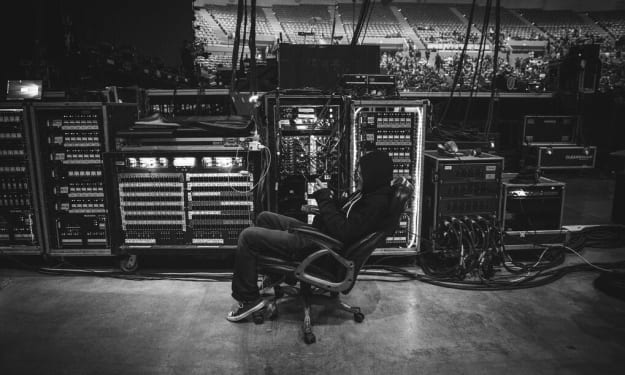Combination locks serve no purpose at all.
Combination locks are completely useless

Combination locks are convenient; you don't have to worry about losing the key or anything. However, one of the biggest issues with combination locks is that they can be cracked through trial and error; you don't have to be Danny Ocean to do that; try enough times, and you'll be able to unlock one. This means that convenience comes at the expense of security. This is all because of the mechanics of how these locks work. Inside a combination lock, there are several rotating discs; each of these is aligned with a number on the dial when you input the appropriate combination. The simplicity of combination locks is also their downfall. Because they rely on a fixed numerical code, anyone with enough time and patience can attempt a Brute Force strategy, methodically trying different combinations until they find the one that works. This makes combination locks more predictable and therefore more exploitable for potential intruders. However, there are other practical limitations. Certain combination locks might not be as resilient to harsh weather, including freezing temperatures, snow, or rain, which could have an impact on how well they function. Furthermore, typing a combination rather than using a key may take longer, making it awkward or problematic in emergency scenarios or other Quick access is necessary, but keep in mind that every type of lock has its drawbacks. Let's move on to talking about key locks. At first glance, their distinctive external keys and sophisticated internal mechanisms seem to offer a higher level of security. Yes, they are intricately designed, with pins that must line up precisely with the keys. Cuts appear to offer a strong deterrent against intruders, but in reality, keyed locks are susceptible to a number of bypass techniques, such as lockpicking, a skill that determined intruders can readily master. They also allow for mistakes in security, as evidenced by the widespread practice of concealing extra keys throughout the house. Even if you take care not to leave your key anywhere or give it to anyone, there's still a chance that an intruder might try to break the lock if they have strong muscles and know you won't be home for a while. In that case, bid a fond farewell to your valuables. Now, how about key safe locks? You know, the ones that people use for rental apartments. These devices are typically mounted to a wall or other secure surface and can be accessed only by entering a correct code. They offer a secure place to store your It sounds like a good idea to stop playing the dangerous game of hide and seek with your extra keys behind flower pots, but before you can breathe a sigh of relief, remember our mantra. I'm trying to convey that there isn't a lock that is impenetrable. The same risk that combination locks carry also applies to key lock saves. In addition, the mere presence of a key safe may indicate to potential intruders that you are concerned about security, which could make your house appear more appealing. Target, it may seem like an oxymoron, but the worst thing is that it might only take a piece of paper to open them. Usually, key lock saves include multiple spinning The wheels inside the lot are each equipped with a little notch called a gate; by dialling in the combination, you are actually turning these wheels. the ideal mix arranges all of the gates in a straight line. When the gates are in this alignment, a bar or lever within the lock, known as the fence, descends into the gates, allowing the lock to be opened. With a thin piece of paper, the intruders might be able to figure out how key lock safes are configured. The rest of the process will require a lot of luck and some mathematical skills, but since the entire process will take some time, it's likely that someone will be able to spot them before they succeed. The era of digital door locks is upon us. This seemingly futuristic solution includes features like fingerprint recognition keypads with unique PIN codes and even remote access through your smartphone. However, before you rush to the tech stores to buy one, it's important to understand that while digital locks can offer enhanced security features like tamper alerts and the ability to change codes on a whim, they're not without their own vulnerabilities. For example, electronic locks can be susceptible to technical glitches, hacking, or battery failures. Another new tech lock type is biometric locks; although they sound like they belong in spy films, they're actually quite useful instead. These locks guard against key theft by using physical features like your fingerprint, face, or even your eyes to unlock doors instead of keys or codes. code omissions melting rips The most secure locks on the market are biometric ones, but they're also among the priciest. Before making an investment, though, take into account other factors as well. For instance, in the event that the fingerprint or facial recognition features fail, these locks also include backup options like a keypad or a regular key that will allow you to open them. Drilling and hacking are additional features that some safes have. They also need maintenance from time to time; keep in mind that they run on batteries, so you'll need to change them occasionally. You should also clean the locks, particularly the fingerprint section, to make sure they always recognise you, and don't forget about the privacy and cost concerns. Some people find it strange that a lock can store their personal biometric information. After all, no lock is perfect, so the key to home security lies in taking a few other easy precautions as well. For instance, you might be a loner who prefers to keep their daily life to themselves, but for security purposes, it would be wise to consider Making new friends in your neighbourhood and getting involved in a neighbourhood watch programme can also improve security. When you plan to leave, you can notify your neighbourhood so that onlookers can report any suspicious activity they spot around your home. Valuables that are left unattended in the yard or that are easily viewed through windows can draw unwanted attention, so keep expensive items out of sight and use curtains or blinds effectively to lower this risk. Ignore locking second-floor windows and doors, thinking they are unreachable, yet burglars sometimes discover inventive ways to get to these locations. Don't leave a ladder or any other tools that the burglar could use to get inside your home and secure If you don't update or maintain your home security system, it could be disabled or tampered with. you keep it operating properly, make sure you receive regular maintenance and upgrades. Inadequate outside lighting gives a burglar cover to approach unobserved. attempt You should install motion sensor lights and make sure your home's exterior is well-lit as preventative measures against potential intruders. However, you should also keep in mind that despite your best efforts, there's always a chance that a thief will be able to get past your security measures and into your home. For this reason, you should have a safe in your home. Although it's often overlooked as a backup line of defence, a secure safe will come in handy in the event of a break-in. can assist you in safeguarding important papers Lastly, a sometimes disregarded part of home security is digital. If your Wi-Fi network is unprotected, this might serve as a gateway for cybercriminals to access your personal information in Smart Home devices. Use a strong password and think about protecting valuables like jewellery. To prevent that, you can either invest in advanced security systems or, in my case, just purchase a dog with a loud bark.
About the Creator
Enjoyed the story? Support the Creator.
Subscribe for free to receive all their stories in your feed. You could also pledge your support or give them a one-off tip, letting them know you appreciate their work.





Comments
There are no comments for this story
Be the first to respond and start the conversation.